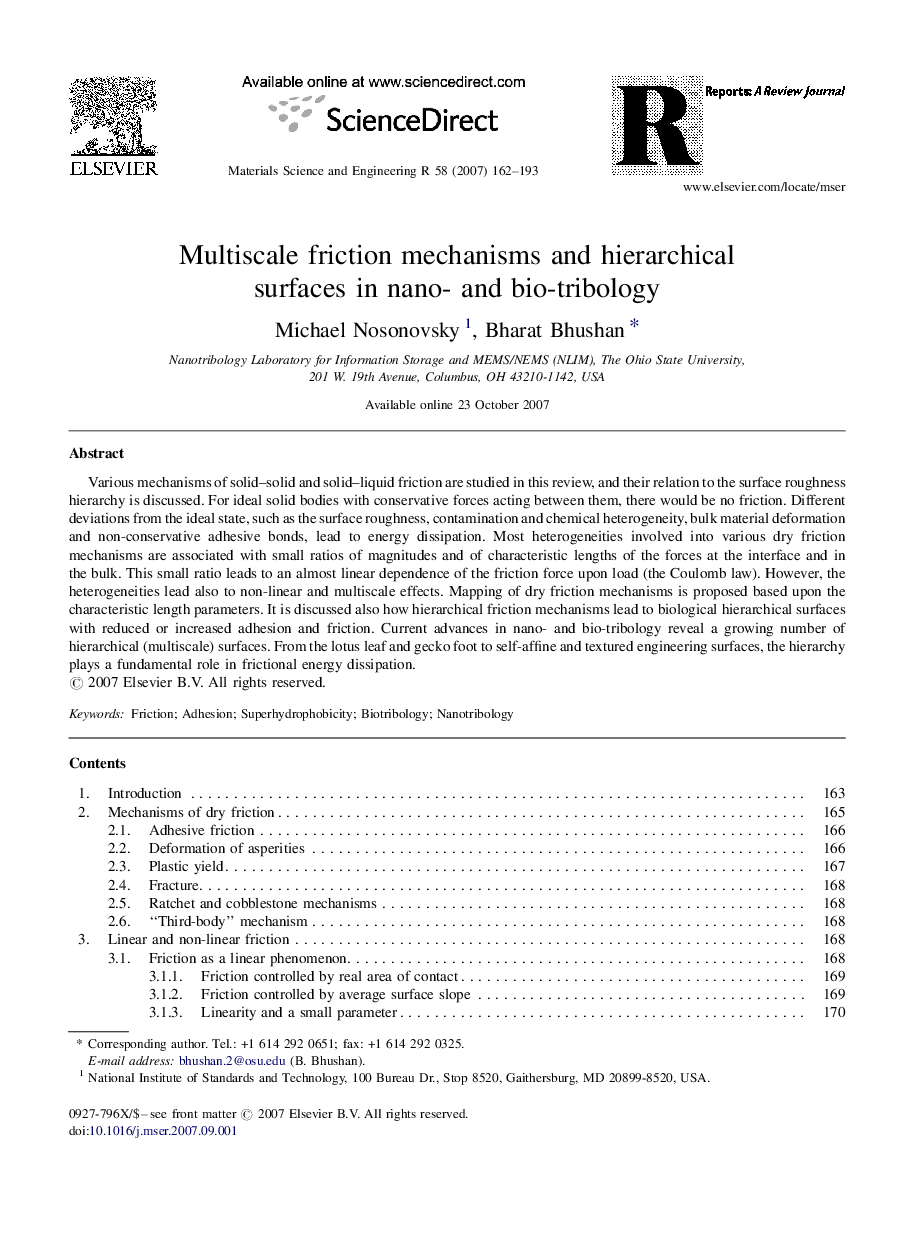| کد مقاله | کد نشریه | سال انتشار | مقاله انگلیسی | نسخه تمام متن |
|---|---|---|---|---|
| 1532702 | 1512180 | 2007 | 32 صفحه PDF | دانلود رایگان |

Various mechanisms of solid–solid and solid–liquid friction are studied in this review, and their relation to the surface roughness hierarchy is discussed. For ideal solid bodies with conservative forces acting between them, there would be no friction. Different deviations from the ideal state, such as the surface roughness, contamination and chemical heterogeneity, bulk material deformation and non-conservative adhesive bonds, lead to energy dissipation. Most heterogeneities involved into various dry friction mechanisms are associated with small ratios of magnitudes and of characteristic lengths of the forces at the interface and in the bulk. This small ratio leads to an almost linear dependence of the friction force upon load (the Coulomb law). However, the heterogeneities lead also to non-linear and multiscale effects. Mapping of dry friction mechanisms is proposed based upon the characteristic length parameters. It is discussed also how hierarchical friction mechanisms lead to biological hierarchical surfaces with reduced or increased adhesion and friction. Current advances in nano- and bio-tribology reveal a growing number of hierarchical (multiscale) surfaces. From the lotus leaf and gecko foot to self-affine and textured engineering surfaces, the hierarchy plays a fundamental role in frictional energy dissipation.
Journal: Materials Science and Engineering: R: Reports - Volume 58, Issues 3–5, 28 November 2007, Pages 162–193